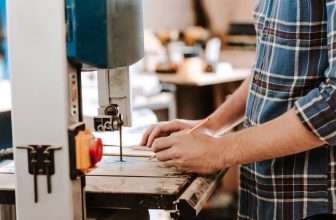Contents
Before you look for a good set of work boots, you must first understand their purpose. Sure, they are geared to protect your feet on the job, but what do you do for a living?
A police officer will want a different type of boot than a construction worker, and someone who does electrical work will need an entirely different boot as well.
Our guide to the best types of work boots will help you find the right fit, but before we get to get to sizes, we need to discuss a few features that qualify a boot for work duty.
Toe Construction
Work boots get their name due to the fact they are worn to work on construction sites, and not in an office. Obviously, you can wear these boots when you’re off the clock or working in the yard, but no matter where you spend your time, it all starts with the toe.
Steel Toe
A boot deemed “steel toe” has a steel toe and is ideal for working in environments where you may be prone to drop things on your feet. They won’t be much help if someone stops a Bobcat on your foot, but they do offer up extra protection where it counts.
If you’ve ever dropped a bucket of paint or bag of concrete on your foot, you already know a steel toe boot can save you from a trip to the doctor’s office.
Composite toe
Whereas steel in the toe of a bad adds a bit of weight, that is not an issue when work boots have good composite toe cap.
This has quickly become one of the more popular types of work boots. In place of steel in the toe box, there is a cap made of a composite material that’s tough, but not metal or magnetic. That makes it ideal for certain industries where those materials can cause issues in footwear.
Alloy Toe
Another lightweight material used in the toes of work boots today are alloys.
These toe caps can be anything from a mix of aluminum and other elements to titanium and can offer a unique solution to the weight issue with steel toe boots. There is a drawback however as the more exotic the material, the higher the price.
Soft Toe
As the name implies, these boots do not have any metal in the toe at all and are “soft” like a traditional leather boot with some give. These boots are generally rated against specific types of hazards, and while there is no toe protection, they are considerably more comfortable than a safety toe boot.
Outsoles
Simply put, the outsole is the part of the boot that touches the ground. This area is key as while you need to keep your feet safe, you also want to be comfortable. For rough job sites where nails are present, thick treads are a must or boots with a special type of protection.
Shallow Tread Boots
Will you work on slick surfaces where you need traction at all times? How about garages with oily floors or wet grass?
A boot with a shallow tread is your best option for these types of situations, and they tend to leave mud behind due to their tread depth. Hiking boots with shallow tread are also a comfortable alternative for these situations.
Vibram lugs
This material is found in all types of footwear, not just work boots although Vibram lugs are a bit different than what you’ll find on a pair of Clarks. These heavy-duty lugs provide plenty of grip and are amazing on tough terrain and steep grades where your boot needs to get a good grip.
Air Bobs
Air Bobs are basically little knobs on the bottom of the boot. Each little air bob is built to grip the ground independently, and it’s a common type of outsole found on boots across the board. Rocks and dirt are no match for this type of tread.
Types of protection for work boots
While we covered the toes and the bottom of your feet, sometimes you will need a little extra protection work in particular areas. That includes shops with greasy floors and sites loaded with rusty nails lying in wait.
Resistances
This goes back to our initial question of “where do you work” as that will decide if you need additional protection from your work boots. This is where resistances come into play, and there are plenty of options to choose from.
If you work in the electric field, you’ll want to look for a boot with electrical resistance, and there’s a good chance it will be able to withstand water as well. That said, there is a huge difference between “waterproof” and water resistant, so keep that in mind if you work in wet environments.
Oil is a tricky substance to deal with, and there is protection against that along with soles designed to deal with snow and ice. If heat is an issue, there are materials to combat that as well.
Last but not least is the popular option known puncture resistance. This feature will ensure a nail doesn’t send you home for the day, and while it can add some weight to the boot, it’s a requirement for some professions.
Metatarsal Guard
These unique boots provide protection for one specific area of your foot although they usually offer up other safety precautions as well.
A boot with a metatarsal guard has a built-in piece to protect the metatarsal area where the laces rest on top of your shoe and run to the toe cap. Some are external, but many specialty boots have internal systems today.
Conclusion
We only covered the basic types of work boots and hope our guide helps you narrow the field as there are thousands of options available.
No matter which style you settle on, the best work boots will be certified by ANSI, OSHA or ASTM when safety is a concern. It’s something to always keep in mind if you’re a pro or work in a field with strict standards on footwear.
You also should take a careful and always clean your shoes after use.






